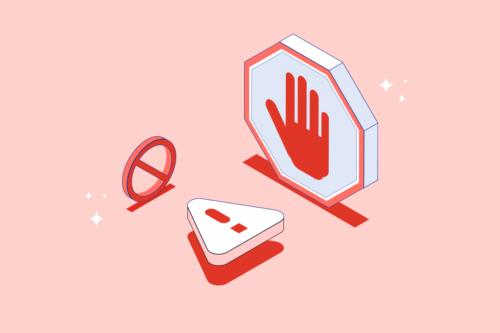
There is a lot to learn when you first get into the exciting and complex crypto world. As with anything you are new to, it is easy to make mistakes. The good news is that many of these mistakes are avoidable! This article discusses the most common mistakes that people make when they first start trading and investing in cryptocurrency. Our goal is to help you maximise your profits and minimise your exposure to risk.
1. Trading based on emotions
It’s important to not trade or invest based on emotion. Ideally, new crypto investors and traders will have a solid plan or crypto trading strategy and make decisions to enact that plan based on logic and evidence, not emotions like fear, greed, or uncertainty. Most successful crypto investors are incredibly patient. They will perform thorough fundamental and/or technical analysis and set targets for when to buy and when to sell. Then they will remain patient and enact their plan. As Warren Buffett once said, “the stock market is a device for transferring money from the impatient to the patient.” Cryptocurrency markets are very similar.
If you have a good plan, you will not be susceptible to panic buying or panic selling, which is something that beginners lose a lot of money doing. For example, Jane, who is new to crypto, buys Bitcoin at $50,000. The market starts crashing and she fears Bitcoin will go down to $10,000 so she panic sells at $40,000 for a big loss. Then the market rebounds and she panic buys back in at $45,000, again at a big loss. This is an easy way to lose money very quickly. Having a solid and robust investment plan will help you avoid this.
2. Not conducting your own research before buying
There are currently over 10,000 digital currencies and practically anyone can set up a new one. So it’s a good idea to do your own research about a coin before investing any of your hard-earned money. You should be asking questions like how active are the developers? What is the community like? Read the whitepaper. Ask questions on Reddit or Twitter. Read as many articles as you can on education platforms such as Swyftx Learn.
Did You Know?
Many projects outline their vision in their whitepaper and use it to secure funding to develop the project. With Bitcoin, Satoshi Nakamoto wrote the code for the entire network before they wrote the Bitcoin whitepaper!
For long-term investments, make sure to only buy into projects that have real-world utility or provide a solution to an actual problem. There are plenty of scams within the cryptocurrency market, and they only succeed by getting money from uneducated investors. There are also great projects that have inexperienced teams or unrealistic delivery goals, which can be a risk to invest in.
You can practice your trading strategies with mock currency on the Swyftx demo account.
3. Investing more than you can afford to lose
One of the golden rules with crypto investments is to only invest what you can afford to lose. This means that if your budget will only allow you to invest $1000, you should only invest $1000. Don’t take out loans or borrow money from family or friends to invest beyond your means. There is no such thing as a guarantee in cryptocurrency markets.
4. Not diversifying your portfolio
If you’re new to the crypto market, you will probably buy some Bitcoin. It’s a fantastic asset and the entry point into trading crypto for most people. But there are lots of other great projects that might be better suited to your values or investment strategy. Try a couple out. Diversifying your portfolio can be a great way to stabilise your investments.
For example, Jimmy decides to invest $2,000 into Bitcoin at $20,000. Bitcoin then surges to $25,000, so Jimmy has made $500 off his investment. However, during this time Ether has surged from $800 to $1400. If Jimmy had diversified his portfolio and put half of his money into Ether, he would have made $750 from Ether, as well as $250 from Bitcoin, for a total profit of $1,000.
Interesting Fact
Although the price of Bitcoin is the highest of any digital currency, it often does not perform anywhere near as well as other coins, such as Ethereum, in terms of percentage increase in value. On the plus side, Bitcoin generally doesn’t lose value as quickly as altcoins, which usually makes it a better store of value.
5. Not securing your assets properly
Whether your portfolio value is $1,000 or $100,000, it is always important to secure your assets properly. Try to use a unique password that you don’t use on any other website. Don’t show your private keys to anyone, and store them in a safe and secure place. Enable Two-Factor Authentication (2FA), which uses a text message or a third-party app such as Google Authenticator to generate a unique code that will be used to complete your login. It is also highly recommended that you use a hardware wallet, such as a Ledger or a Trezor for storing your crypto long-term.
There is a huge amount of money in crypto, which makes it very attractive to scammers and hackers. If you fail to secure your assets properly, you risk having them stolen.
Important To Remember
There is a commonly used adage in crypto that says “not your keys, not your coins”. In other words, the person who owns the private keys decides how to spend the associated crypto. If you don’t own the private keys, you are trusting a third party with your crypto. Keeping your crypto assets in cold storage means you own your private keys and you are storing your crypto in an ultra-secure environment with many extra layers of security. A hardware wallet is like your own private Fort Knox.
6. Leverage trading too early
Leverage trading (or margin trading) is a high-risk/high-reward crypto trading strategy that allows you to amplify gains by using your assets as collateral to borrow money to make bigger trades. Experienced leverage traders can make huge amounts of money in a very short amount of time, but it is extremely risky for beginner traders as it also makes it possible to lose huge amounts of money very quickly. Once again, it is important to not invest more than you can afford to lose.
It is recommended that you avoid leverage trading until you have a better understanding of regular spot trading and market fluctuations in general. A lot of traders will not touch leverage at all, because the risks are too high. Other high-risk/high-reward trading strategies like futures and options are also not recommended when you’re first starting out.
Summary
The crypto market is a unique and exciting place to be! There are dozens of opportunities every day to make money if you know what you’re doing. That said, it is important to make sure that you are not losing money due to avoidable mistakes. This article has covered six of the most common mistakes that beginner traders make. Learning to avoid these mistakes will put you well ahead of the pack and give you the best chance to be a successful crypto investor or trader. Learn more about crypto investment strategies and securing your assets by visiting Swyftx Learn!
Next lesson
Disclaimer: The information on Swyftx Learn is for general educational purposes only and should not be taken as investment advice, personal recommendation, or an offer of, or solicitation to, buy or sell any assets. It has been prepared without regard to any particular investment objectives or financial situation and does not purport to cover any legal or regulatory requirements. Customers are encouraged to do their own independent research and seek professional advice. Swyftx makes no representation and assumes no liability as to the accuracy or completeness of the content. Any references to past performance are not, and should not be taken as a reliable indicator of future results. Make sure you understand the risks involved in trading before committing any capital. Never risk more than you are prepared to lose. Consider our Terms of Use and Risk Disclosure Statement for more details.

 Article read
Article read




